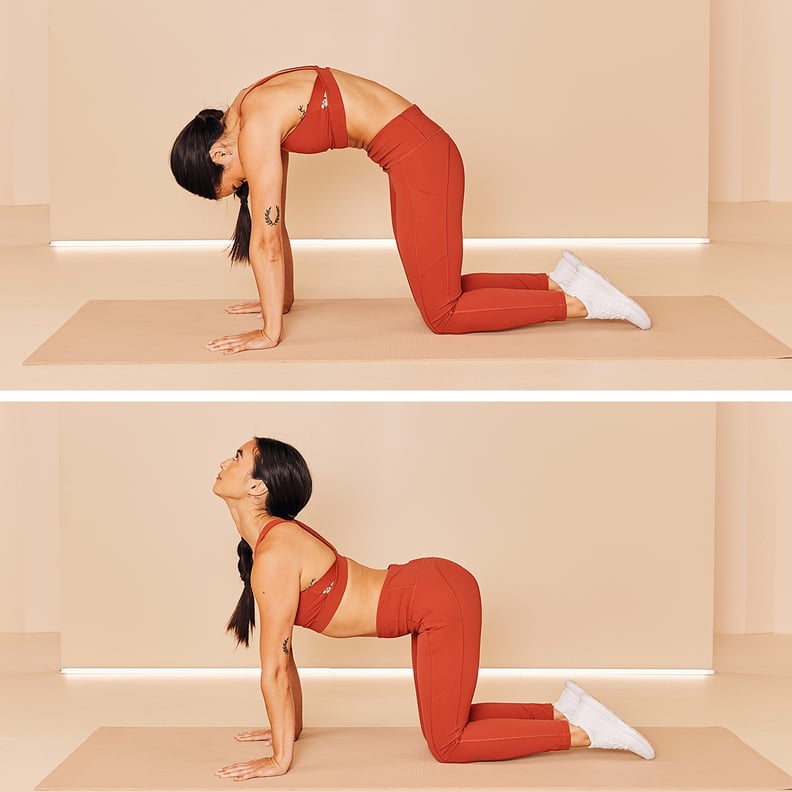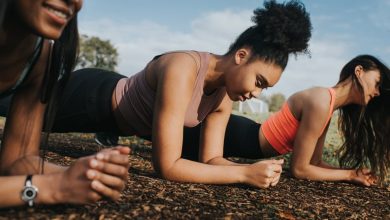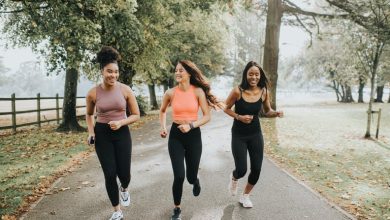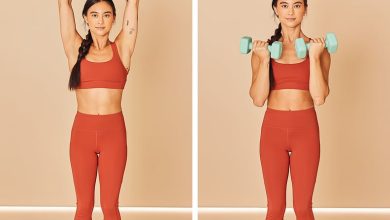The Cat-Cow Pose Benefits Your Whole Body — Here’s Exactly How to Do It

If you’ve ever taken a yoga class, then you’re probably familiar with the cat-cow pose. This full body move is typically used to loosen up your body to prepare for the rest of your practice, but it’s also a great option to add to any pre-workout warm-up routine. Whether you’re choosing to jump-start your day or recover from it, cat-cow is the perfect stretch to incorporate into your routine.
Although the pose seems simple, being intentional about your breath and movement can help increase its benefits. Here’s what else you need to know about the power move — including how to do the cat-cow pose correctly.
Experts Featured in This Story
Rachel Hirsch hosts the podcast Femme Portfolio and is the co-founder of Empowered Yoga Studio in Los Angeles.
Alexis Artin is a licensed growth coach and the co-founder of Soulsway Practice, a meditation and movement studio based in Los Angeles and Ponte Vedra, FL.
The Benefits of Cat-Cow Pose
There are more benefits to this simple stretch than meets the eye. “Cat-cow boosts spinal flexibility, eases tension in your back and neck, improves posture, and connects breath to movement,” says yoga expert Rachel Hirsch. “It’s a great way to awaken the fascia that holds the insides of your body and prep your body and mind for more movement or even just the day ahead.”
Growth coach Alexis Artin agrees, adding, “Physically this stretch improves joint health, posture, mobility, and core stability just to name a few. From a deeper somatic perspective, this is a great movement for relaxing key muscle groups that store most of our tension, for example the throat, shoulders, back and hips.”
Somatic movement is more focused on the experience of the movement than the outcome; it allows you to feel what’s happening in your body. “The permission this posture provides boosts body awareness and confidence in an accessible way,” Artin says.
How to do a Cat-Cow Pose
Step 1: Start on all fours with your shoulders stacked above your wrists, and your hips under your knees.
Step 2: Inhale, drop your belly, and lift your chest. (This is the cow pose.)
Step 3: Exhale, round your back, tuck your chin, and press through your hands into the floor. (This is the cat pose.)
Step 4: Repeat for 8 to 10 reps.
Tips for Proper Cat- Cow Form
Start with a neutral spine. When you’re on all fours your hands should be directly under your shoulders and knees under your hips. And your back should be flat, like a table, Artin explains.
Coordinate your movement with your breath. Inhale during the cow pose, exhale during the cat. “Bonus points for adding sound, like an audible sigh, for an extra layer of somatic benefit,” says Artin.
Engage your core. Artin recommends keeping your abdominal muscles lightly engaged the entire time to support your spine throughout the movement.
Move slowly and intentionally. “Slow down, spread your fingers wide, and stay grounded through your whole hand,” says Hirsch.
Distribute your weight evenly among your hands and knees. “It helps to maintain active shoulders in both poses by gently pressing through your hands and keeping the shoulder blades stable,” says Artin. This keeps the posture balanced and supportive.
Keep your shoulders and neck relaxed. “Avoid letting your shoulders creep up toward your ears and keep them away from your neck. Watch for your neck tensing, crunching or overextending,” Artin says.
As with any movement, it’s important to make any adjustments you feel are necessary. “Check in with yourself throughout the movements and modify accordingly. That might be repositioning down to forearms, up onto fists or fingertips or perhaps adding cushioning beneath your knees,” Artin notes.
What Muscles Does Cat-Cow Work?
A Cat-cow targets the majority of the muscles in your body—and it feels amazing, too. It works your spine and back muscles, your core, hips, pelvis, shoulders, chest and neck. “Cat-cow wakes up your spine, stretches your back, and gently works your abs. Moving through cat and cow even loosens your wrists, shoulders and hips—it’s like a mini massage for your body,” Hirsch says.
Common Cat-Cow Mistakes to Avoid
Cat-cow may seem like a simple stretch, but there are some mistakes that could render the stretch less effective—and potentially even painful. Artin recommends being mindful of the below.
- Overarching your lower back in cow pose. Dropping the belly too far in the cow pose can create excessive pressure in the lower back.
- Tensing your neck. Be careful not to crane the neck too far up in cow pose or force the chin into the chest in cat pose so that you don’t strain these areas.
- Moving too quickly. Rushing through the movements increases the chances of injury.
- Locking your elbows. Hyperextending them can put strain on the joints.
- Letting your shoulders collapse. Don’t shrug your shoulders up to your ears or let the chest sink too much in cow pose. This can put too much pressure on your shoulder joints.
- Uneven weight distribution. Make sure not to put too much weight on the wrists or let your knees take all the pressure. Even distribution keeps you stable, and keeps pressure out of your joints.
- Limiting your range of motion. Go through the full range of motion in order to maximize the stretch and its benefits.
- Not moving with your breath. You want to make sure you inhale during cow pose and exhale during cat pose. This will allow you to go through full spinal movement, and better help release tension.
- Misaligned knees and hands. Make sure you don’t have your knees too far apart or hands too far forward. This type of incorrect placement might make the move feel “easier,” but leads to instability and a less effective practice.
Brittany Hammond is a NASM-certified fitness instructor, a fitness writer, and an avid reader. In addition to PS, she has contributed to Livestrong.com, Well+Good, Verywell Fit, and Health.com. She has worked as a group fitness coach for the past seven years.



